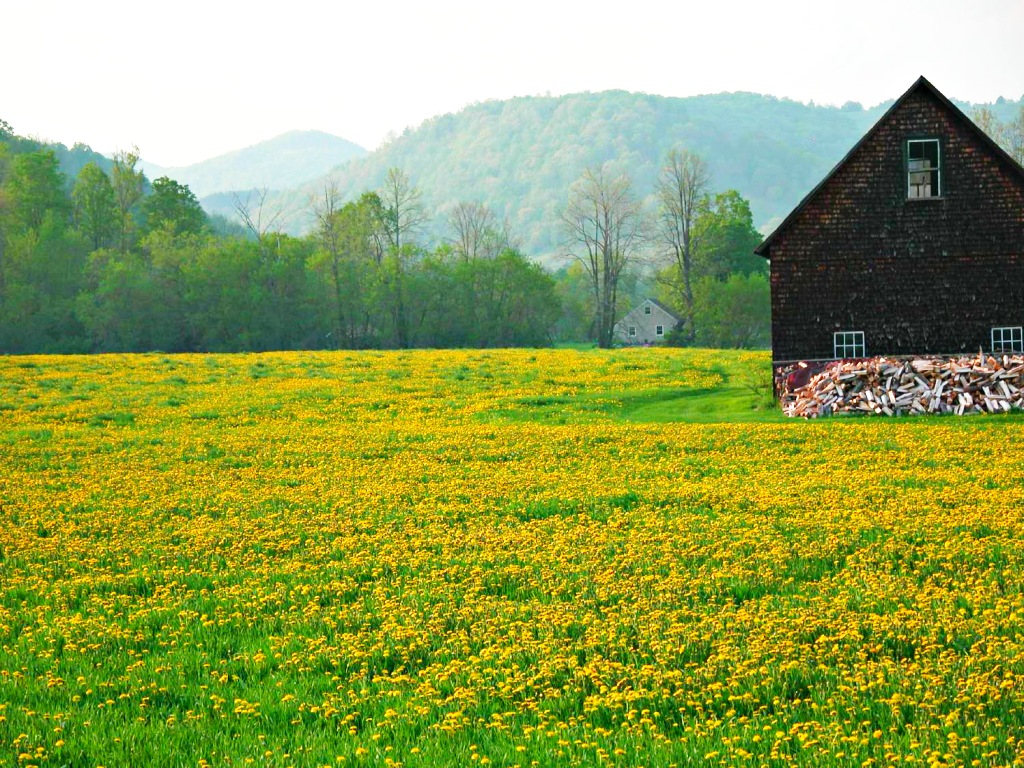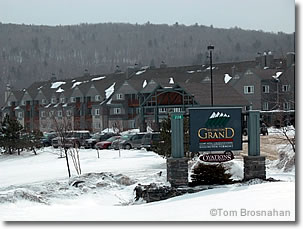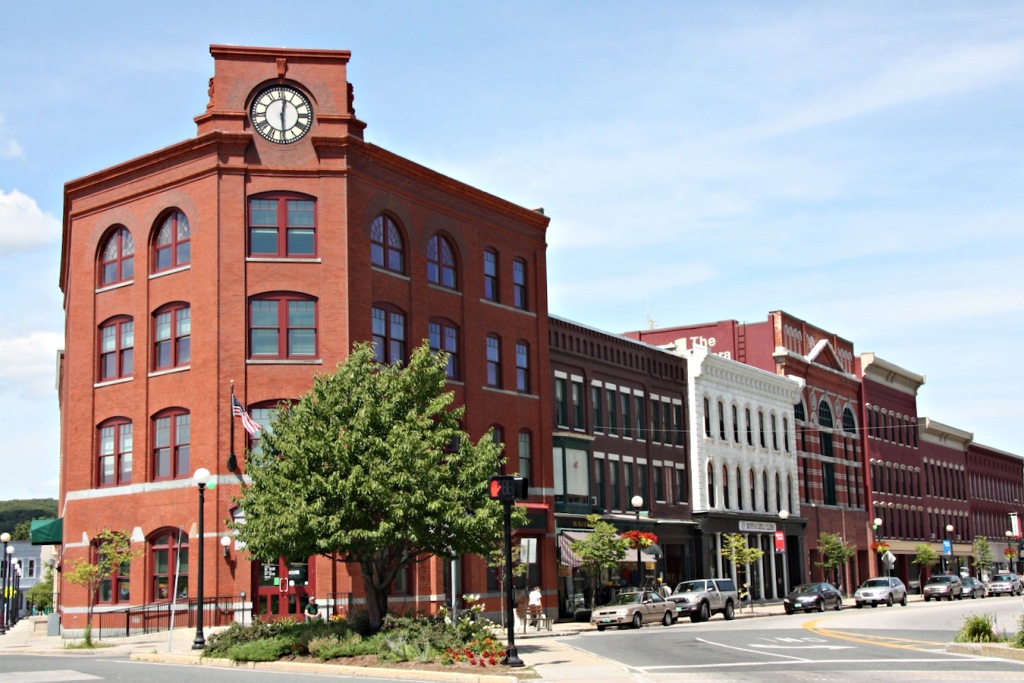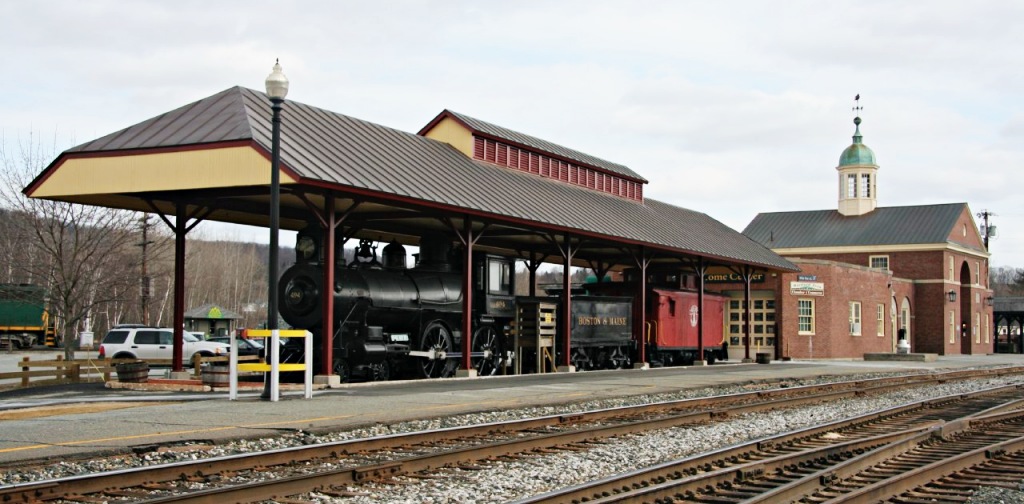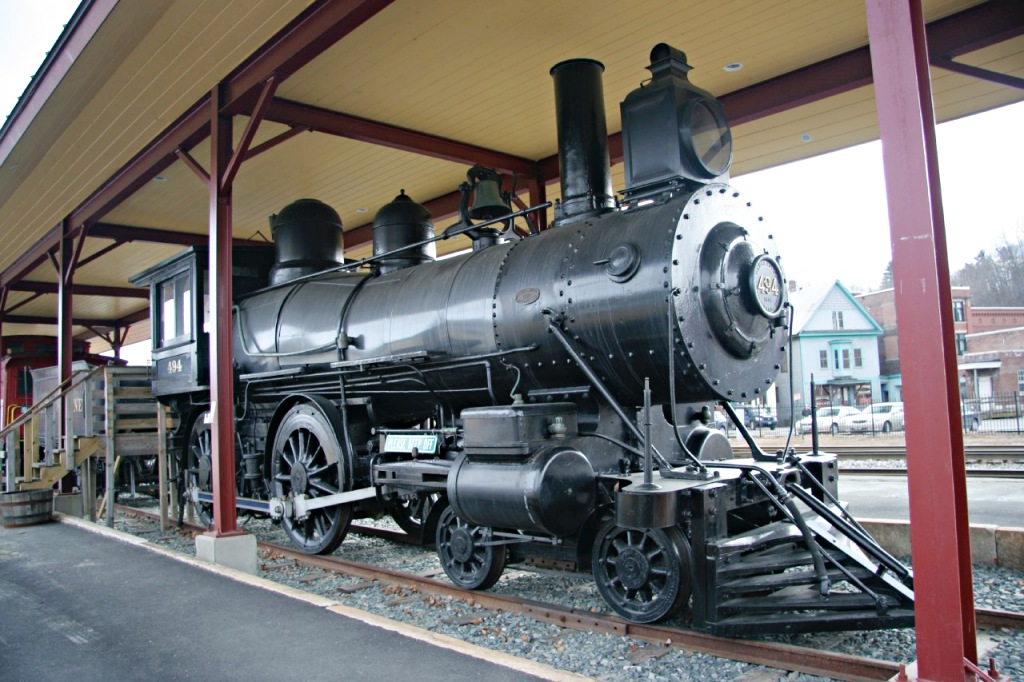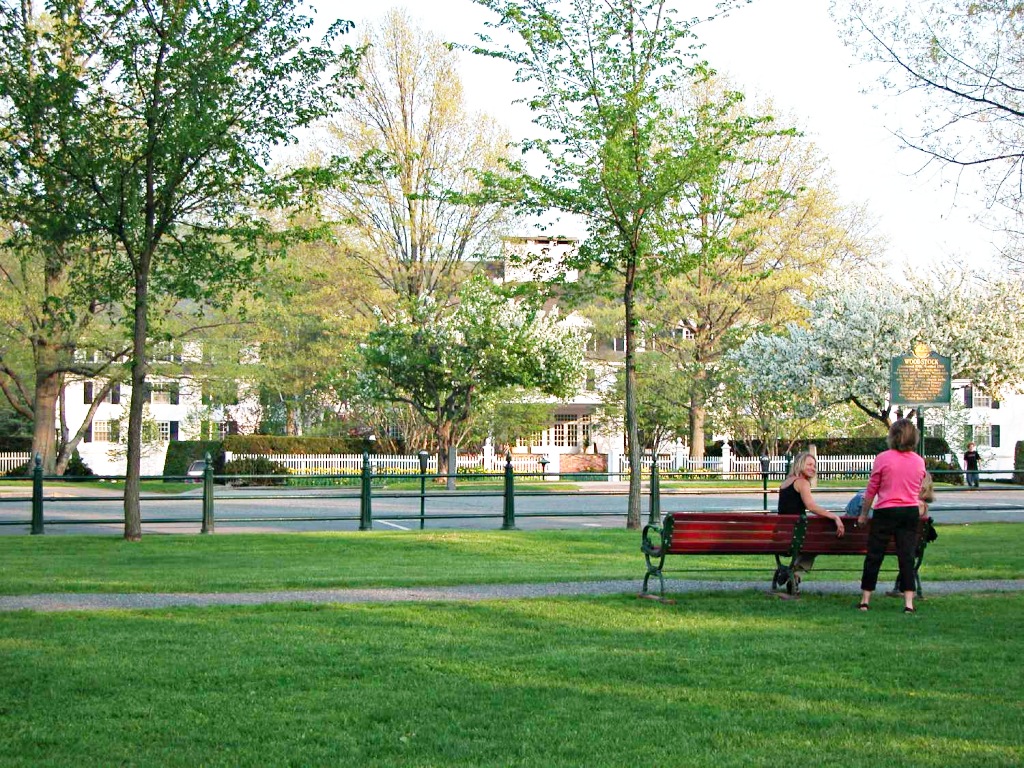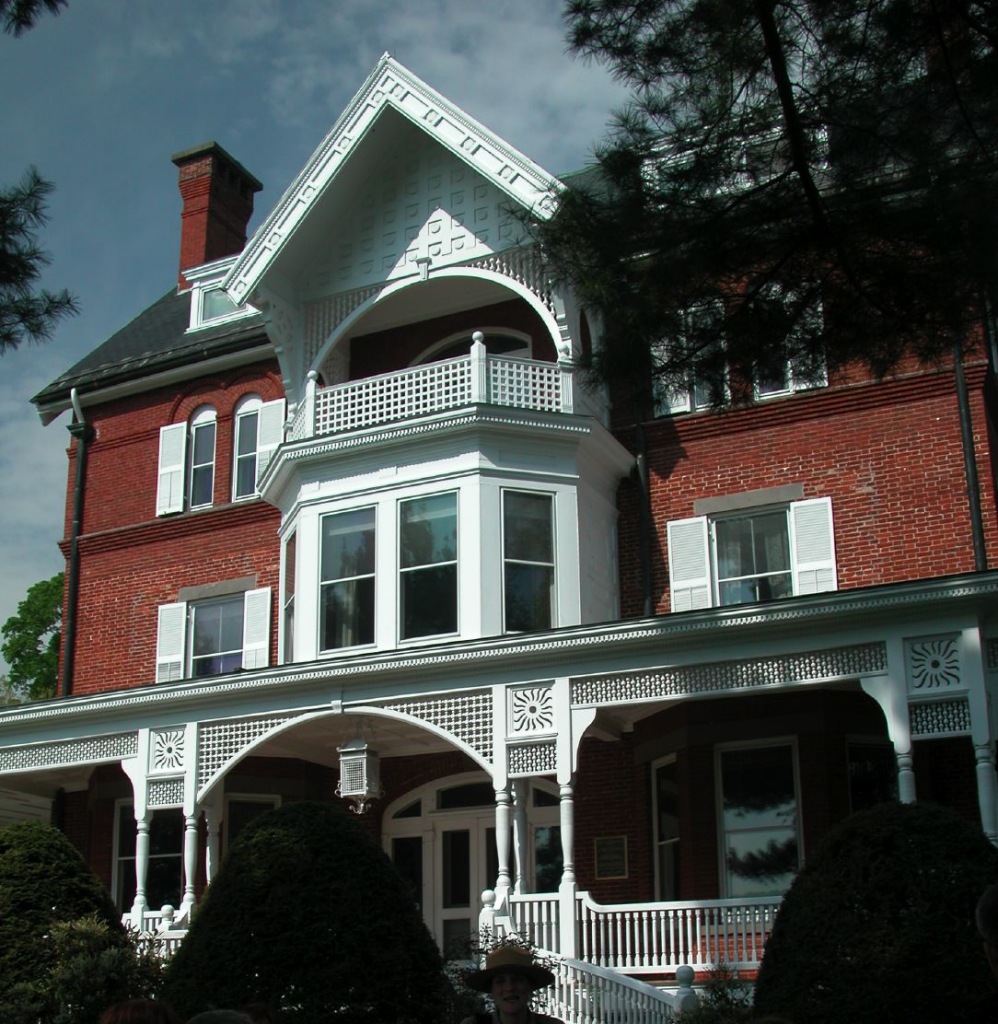Transportation
Car
Rutland is the major transportation interchange in Central Vermont. It's 170 miles (274 km, 3 hours by car) northwest of Boston, 257 miles (413 km, 4-1/2 hours) north of New York City, 68 miles (109 km, 1-3/4 hours) south of Burlington VT, and 92 miles (148 km, 2 hours) northeast of Albany NY.
Bus
Vermont Translines runs regular bus service 365 days a year on the route from Albany International Airport to Albany, Albany-Rensselaer Amtrak station, and then along US Route 7 to these Vermont towns: Bennington, Manchester Center, Wallingford, Rutland, Brandon, Middlebury, Ferrisberg/Vergennes, South Burlington (for Burlington International Airport), Burlington and Colchester.
Marble Valley Regional Transit District runs Rutland's public transit called The Bus, with routes in and around the city, and to Killington, Ludlow, Manchester and Middlebury VT. The Transit Center is at 102 West St, Rutland VT (map).
The Vermont Agency of Transportation has more information on local services.
Train
Amtrak's Ethan Allen express train from New York City serves stations in Castleton, Rutland, Middlebury, Ferrisburgh-Vergennes, and Burlington VT.
The Vermonter from New York stops at Brattleboro, Bellows Falls VT, Claremont NH, Windsor-Mt Ascutney VT, White River Junction, Randolph, Montpelier-Berlin, Waterbury-Stowe, Essex Junction (for Burlington), and St Albans VT. More...
Plane
Cape Air flies between Boston and Rutland-Southern Vermont Regional Airport (RUT), providing a quicker way (just over one hour) to reach Rutland and the towns of central Vermont.
Ferry
The Fort Ticonderoga Ferry sails between Essex NY and Charlotte VT in the warm months (map). Ticonderoga NY is served by Amtrak's Adirondack train.
Where to Stay
Central Vermont has many country inns, hotels, motels and resorts. Use this handy Hotel Map with Prices to find the one you want.
Killington
Killington, in Central Vermont, 16 miles (26 km) northeast of Rutland VT and 20 miles (32 km) west of Woodstock VT (map), is the largest ski resort in the eastern USA. with the biggest vertical drop of any ski area in New England: 3,050 feet (930 meters).
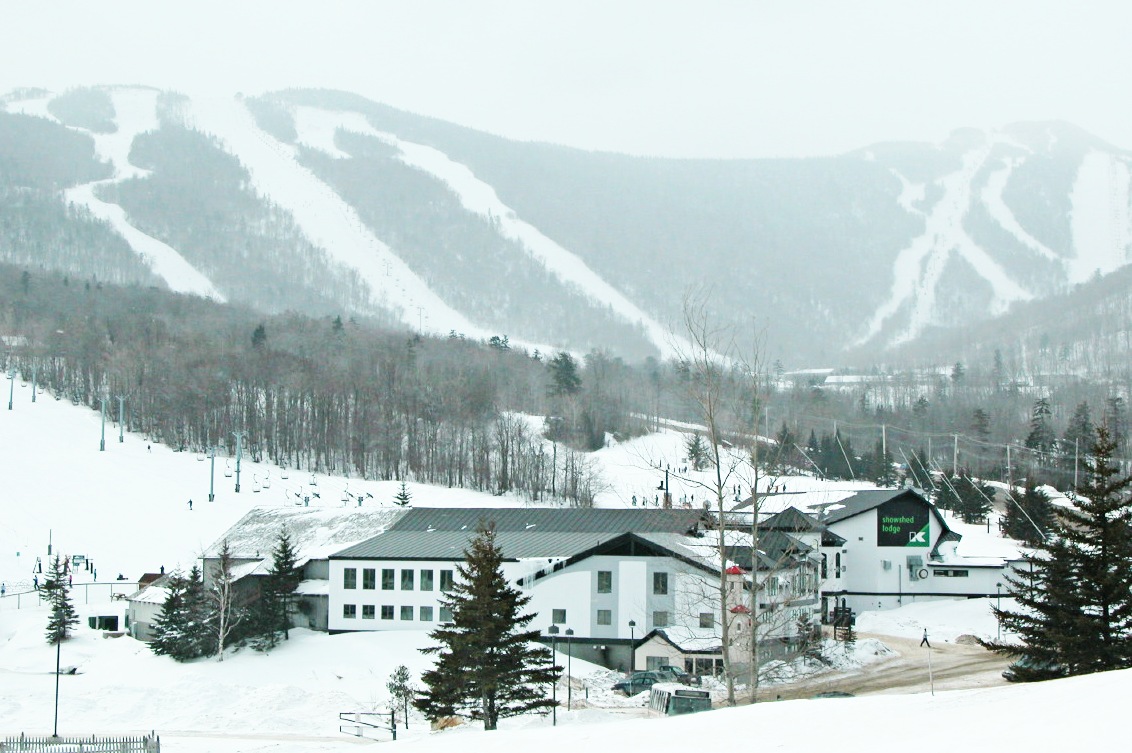
The slopes at Killington.
It's mobbed in winter, but summer is also a good time to visit for organized backpacking and camping trips, tennis practice and lessons, the golf course, and numerous other activities.
The tiny town of Killington, called Sherburne until 1999 when the name was changed, has a year-round population of barely 1,100 persons, but more than 2,500 housing units for the winter-seasonal crowd in the many thousands.
Killington Mountain Resort & Ski Area is everything here, with seven mountain peaks, 212 ski trails over 92 miles (148 km), and 29 lifts.
And the resort is booming, but laid out so well on the side of Killington Peak (4,241 feet/1,293 meters), Vermont's second-highest mountain, that there is plenty of room for all the activities and the visitors.
The ski season at Killington normally begins in November (or in October if conditions permit) and lasts into May.
Summer at Killington
The vast expanse of Killington Mountain Resort is busy in summer with visitors taking scenic ski lift and gondola rides, hiking and mountain biking on the resort's 45 miles (72 km) of trails, swimming and stand-up paddleboarding, tennis, playing the 18-hole golf course and more.
Nearby Pico Peak, owned by Killington, has more family-friendly features, including alpine slides, mini golf, disc golf, rock-wall climbing and horseback riding.
For those serious about getting into outdoor sports, Killington offers lessons, workshops, classes and training programs for many sports and activities.
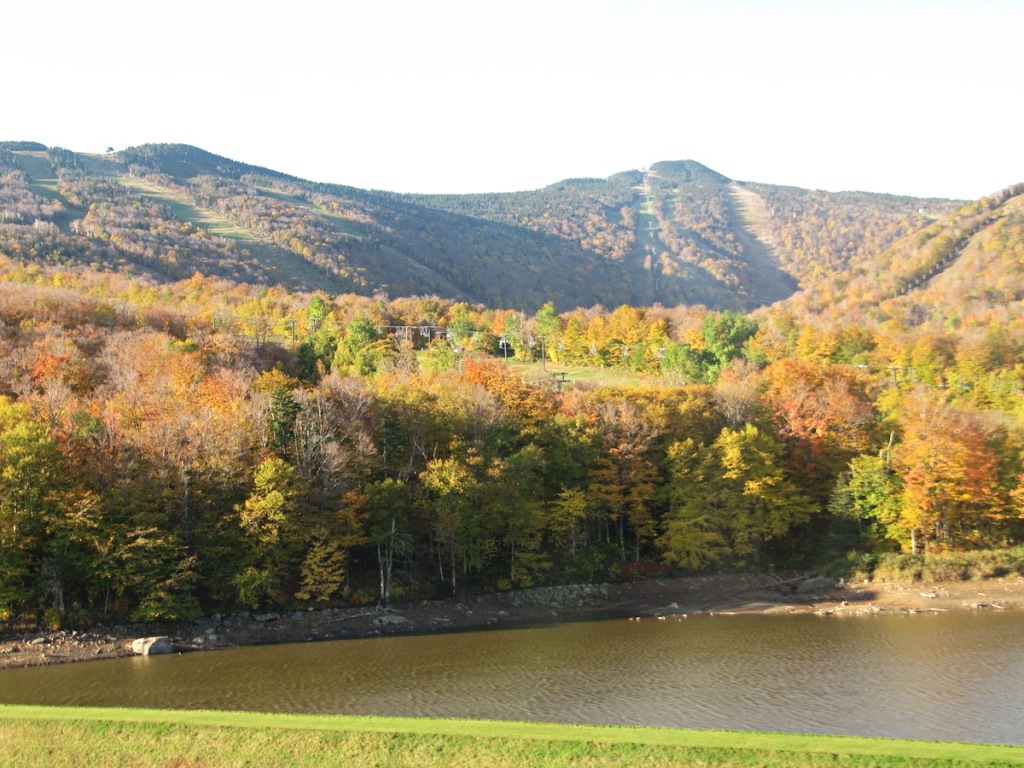
Summer at Killington...
Everyone coming to the Killington area will want to take the K-1 Gondola Ride to reach the 4,241-foot summit of Mount Killington. They say that this summit was the point from which the territory of "Verd-mont" ("green mountain") was christened in 1763.
At the summit you'll find the Peak Lodge, with an observation deck, food and beverage service, and a self-guiding nature trail as well as the start of the mountain's 15 miles (24 km) of marked hiking trails including the Appalachian trail and Vermont's Long Trail.
Killington Hotels & Inns
The thousands of visitors coming to Killington, Vermont, need places to stay, and Killington has them, from the charming 4-star, 30-room Trailside Inn and the 3-star, 21-room Greenbriar Inn Killington to the 3-star, 200-room Killington Grand Resort Hotel.
Use this handy Hotel Map with Prices to find the one for you.
Killington Transportation
Rutland VT, 16 miles (26 km) west of Killington, has Amtrak train service, intercity bus service, and its own airport, so it's the transportation hub nearest to Killington. White River Junction also receives Amtrak trains.
Boston MA: 160 miles (258 km) NW, 3 hours
Hartford CT: 155 miles (250 km) S, 2.75 hours
Montreal QC: 188 miles (303 km) N, 3.5 hours
New York City NY: 254 miles (409 km) S, 5 hours
Plymouth VT: 12 miles (19 km) S, 18 minutes
Rutland VT: 16 miles (26 km) W, 27 minutes
White River Junction VT: 34 miles (55 km) E, 1 hour
Woodstock VT: 20 miles (32 km) E, 30 minutes
Ludlow
The Town & Village of Ludlow, Vermont, on scenic VT Route 100 and the Black River, 23 miles (37 km) southeast of Rutland and 20 miles (32 km) north of Grafton VT (map), is the town where Okemo Mountain Resort is located.

The bandstand and park in Ludlow, Vermont.
Ludlow's year-round population of 2000 people grows exponentially in ski season when skiers and snowboard riders from all of New England and New York flock to Okemo Mountain.
Okemo is particularly favored by families because of its facilities, programs and atmosphere.
A 19th-century factory town because of its riverside location, Ludlow boasted a General Electric factory until 1977, when the factor closed.
Luckily, the ski resort had opened for its first season in January 1956, and as skiing increased in popularity over the years, so did the town's benefits from it.
Where to Stay
Be sure to have advance reservations for your lodgings in ski season; and it's a good idea any time of year. Use this handy Hotel Map with Prices to find your place to stay in Ludlow.
Middlebury
Middlebury, Vermont is replete with beautiful old Georgian and 19th-century buildings, a renowned college of high quality, a powerful creek roaring right beneath Main Street, and a pretty town green.
Main Street, Middlebury VT.
In a state of beautiful towns, Middlebury stands out as one of the prettiest.
Not a village, not a city, it is of a size to offer a comfortable variety of beautiful churches, houses and civic buildings, art and crafts shops and galleries, historic inns and modern motels, restaurants and riverside cafes, all set in an area of exceptional natural beauty.
Otter Creek—most of us would call it a river—flows right through the center of Middlebury, cascading over a natural break in the bedrock right below the Main St bridge. For over a century and a half it provided the water power and electricity that helped Middlebury thrive.
Robert Frost wasn't the only person of renown to tramp the streets of Middlebury.
Today, in the same location, you can shop for beautiful Vermont art and craft items in the Vermont State Craft Center at Frog Hollow.
Middlebury has highly-regarded Middlebury College as well as the University of Vermont's Morgan Horse Farm.
Middlebury College
Founded in 1800, this small college in the Champlain Valley between the Green Mountains and the Adirondacks looms much larger in the academic world than its size and location might indicate.
Poet Robert Frost's participation in the Bread Loaf Writers' Conference (held in Middlebury's mountain campus close to nearby Ripton) spread the college's reputation even further.
The student body of about 2,500 may take over 850 courses in 44 majors, and participate in Middlebury international programs in 15 countries and 36 cities around the world.
Middlebury can also claim the famed Bread Loaf Writers' Conferences, conceived by poet Robert Frost. Although now grown to an international institution with numerous programs and branches abroad, the classic conference is still held at the historic Bread Loaf Inn in the mountains outside Middlebury.
More information about Middlebury College is available at the admissions office in Emma Willard House, 131 South Main Street (VT Route 30).
Frog Hollow
A man named John Deere was an apprentice in Middlebury's Frog Hollow from 1821 to 1825, after which he moved to Illinois and invented the world's first steel moldboard plow, "The plow that broke the plains," making his name a household word in farms across the nation.
Today you can buy beautiful art and craft items there at the Craft Center at Frog Hollow, 1 Mill Street, down the hill from Middlebury's Court House Square, across the bridge over Otter Creek, and down Frog Hollow Lane on the right. (Look for the signs.)
The fascinating craft exhibitions are on all year, not to mention craft classes and a gallery of Vermont crafts.
Morgan Horse Farm
To see the pure-bred steeds at the University of Vermont's Morgan Horse Farm, head west on Route 125 from Middlebury, turn right onto Route 23 (Weybridge Street), and follow signs to the farm for about 2 1/2 miles to 74 Battell Drive, Weybridge, VT.
Once into the farm, you'll get a guided tour of the stables, an audiovisual presentation about the farm and the Morgan horse, and the chance to roam the farm's spacious grounds to see the Morgans in training or playing and perhaps have a picnic at the picnic area.
Where to Stay
Although Middlebury has several charming inns, at significant times in the Middlebury College year they may all be fully booked, so make your hotel reservations well in advance.
The 4-star, 71-room Middlebury Inn dominates the Court Square even more than the red-brick courthouse just up the hill from it. Price is determined by the size and location (and thus the views) of the room. The inn has its own restaurant serving breakfast, lunch, and dinner. Middlebury College is just a mile (15-minute walk) away. More...
Use this handy Hotel Map with Prices to find accommodations in Middlebury or a neighboring town.
Plymouth
This tiny hamlet gave the USA its 30th president (Calvin Coolidge), and also a long history of making cheese (no pun intended).
Birthplace
of President
Calvin Coolidge.
Calvin Coolidge was born in this tiny hamlet just off VT Route 100 (map). You can visit the Calvin Coolidge Birthplace, Homestead, and a wonderful VT cheese factory.
The former president's early history is interesting, but the story of his inauguration is full of fascination.
In August 1923, during his term as vice president, Mr. Coolidge returned for a vacation to the tiny Vermont hamlet where he was born (July 4, 1872).
Before he could even relax from his journey, the news arrived that President Harding was dead, and that he, Calvin Coolidge, was the 30th president of the United States...but he had to take the oath of office!
The only qualified judicial official to administer the oath was the hamlet's notary public, who happened to be the new president's own father, Col. John Coolidge. Thus it was Colonel John who administered the oath to his son by the light of a kerosene lamp at 2:47am, August 3, 1923.
The Calvin Coolidge State Historic Sitenow includes most of the hamlet. You can visit the Homestead, the Birthplace, the Wilder Barn (a farmer's museum), the village church, the cemetery where President Coolidge is buried, Wilder House (once the home of Coolidge's mother), and a working cheese factory.
Plymouth Artisan Cheese, founded in 1890 as the Plymouth Cheese Company by Calvin Coolidge's father and other farmers, still produces excellent granular-curd cheese (similar to cheddar) and offers it for sale. It's excellent—one of my favorites for eating and giving as real Vermont gifts. If they're making cheese on the day of your visit, you may be invited to watch the process. More...
Here's more on Vermont artisan cheeses.
Rutland
Vermont's second-largest city is the commercial hub of the region, with attractive century-old architecture, a summer farmers' market, an Amtrak train station, and lots of other useful services.
The railroads brought prosperity to Rutland VT in the 19th century, taking the marble from nearby quarries to the world outside.
Today the city is the commercial and transportation hub of central Vermont, a good place to find a hotel, restaurant, shop or trade, but there's not a lot to keep the casual visitor.
What to See & Do
The Chaffee Art Center, at 16 South Main Street, may have an exhibit of interest, and the Vermont State Fair brings Rutland to life in late summer.
The Norman Rockwell Museum of Vermont is in Rutland, with a collection of the artist's work. (There's more at the Norman Rockwell Museum in Stockbridge MA.)
On New Year's Eve, Rutland has a First Night celebration.
Otherwise, Rutland is a transportation center and the go-to place for nearby central Vermont towns such as Dorset, Killington, Middlebury and Woodstock.
Where to Stay
Use this handy Hotel Map with Prices to find accommodations in Middlebury or a neighboring town.
White River Junction
White River Junction's history is in its name: an important railroad junction town on the Connecticut River. Today it's important for car and bus transportation as well.
River traffic was the first source of prosperity for White River Junction VT, situated as it is at the confluence of the White River and Connecticut River, but in the 1800s when the railroad came up the Connecticut River Valley, the town grew even more rapidly.
With abundant water power, the town saw red brick factories and warehouses go up and, as the wealth of the factory owners did, grand houses also went up in the town.
The age of water power and steam power came and went, and White River Junction is smaller now, but its situation on the rivers just as nice. It's part of the urban area called the Upper Valley (of the Connecticut River) which also includes Norwich VT; Hanover, Lebanon and West Lebanon NH; and nearby smaller communities.
Lots of travelers still come through White River Junction. Two Interstate highways come through here, taking vacationers to nearby Woodstock VT and other destinations by car and bus, and Amtrak's Vermonter train travels through daily on its run between Washington DC, New York City, Burlington and St Albans VT, stopping to set down and take up passengers, but the town is now a lot sleepier than it was in its 19th-century heyday.
Because of all the transportation, the nearby attractions and ski resorts, the Upper Connecticut River Valley urban area has plenty of hotels, motels, inns and B&Bs. More...
You may want to stop in White River Junction for services. If you do, take a look at the railroad museum in the town center, with its steam locomotives:
Woodstock
Vermont's beautiful, historic, aristocratic town, favored by Rockefellers, Rothschilds, and the rest of us. Woodstock was chartered in 1761, and within five years it had been designated the shire town (county seat) of Windsor County—one reason it's so beautiful today.
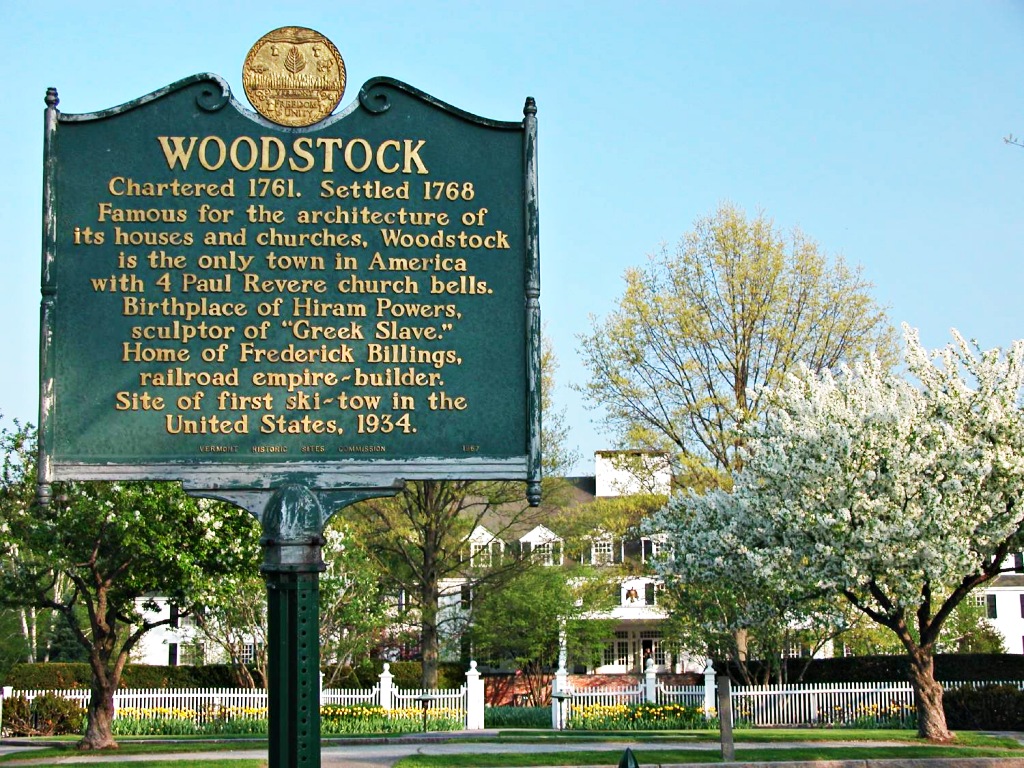
The Green, historic marker and the Woodstock Inn & Resort.
Woodstock, 140 miles (225 km) northwest of Boston and 14 miles (23 km) west of White River Junction, is particularly well situated, in a beautiful valley of the Ottauquechee River with forested mountains all around and a historic Green at its center.
As the shire town (county seat) of Windham County, Woodstock, on a river that could power 19th-century small industry, Woodstock prospered.
With the arrival of the railroad and tourism later in the 1800s, Woodstock found its future. Soon wealthy vacationers were coming here. They still do, and they have made enlightened efforts to preserve the town's history and beauty for all visitors.
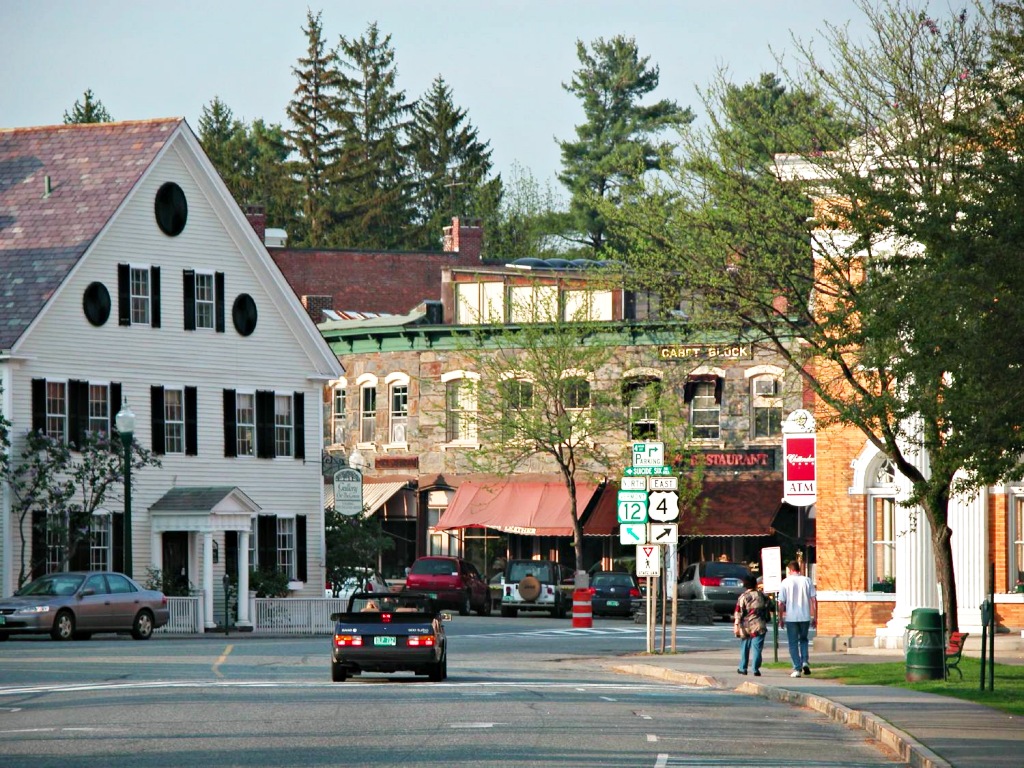
Main crossroads at the center of Woodstock...
What to See & Do
Start planning your visit with a look at the lodging possibilities: Woodstock's hotels, motels, inns & B&Bs. Then continue with a walking tour and other things to see and do.
In winter, skiers can put up in the town while they spend the day on the slopes of the small Saskadena Six Ski Area or at Killington Ski Resort, New England's largest, just 20 miles (32 km) to the west of Woodstock.
A Walk in Woodstock
Chartered in 1761, Woodstock was named after the town of that name in England, which is the location of the Duke of Marlborough's Blenheim Palace.
Start at The Green in the center beside the Ottauquechee River (map), surrounded by handsome Federal, Georgian and Greek Revival houses, the Windham County courthouse, and the Woodstock Inn & Resort.
Stroll along the principal streets, Elm Street, Pleasant Street and Central Street, to learn the layout of the town and to admire more of Woodstock's architecture.
On the south porch of the First Congregational Church at 36 Elm Street where it meets Pleasant Street, notice the Paul Revere bell. Woodstock boasts no fewer than four church bells made by Paul Revere. This one cracked after two centuries of use. The other three are still in service.
In your walks around town, look for Middle Bridge (completely rebuilt in 1969) which carries Mountain Avenue across the Ottauquechee River (map). This is the only covered bridge in the town center, but the Taftsville Bridge (1836), 3.8 miles (6 km) east along US Route 4/VT Route 12 toward White River Junction, spans the Ottauquechee at Covered Bridge Road (map).
A number of walking and hiking trails are maintained by the town, and are yours to enjoy for free. Several start right from The Green. More...
The Appalachian Trail crosses VT Route 12 about 3 miles (5 km) north of Woodstock.
A Bit of History
Because of its location next to the Ottauquechee River, in the 1700s, Woodstock had a grist mill and a saw mill, and during the Industrial Revolution of the 1800s, its factories produced axes, guns, furniture, saddles and other leather goods, windows and woolen cloth.
The town's population reached about 3,000.
With the opening in 1875 of the Woodstock Railroad from White River Junction, city visitors began to arrive. The town's beauty drew the wealthy, who bought houses in the town and land in the county.
Among them were Laurance S and Mary F Rockefeller, who did much to preserve the 19th-century beauty of the town.
The town's population today is about the same as it was more than a century ago.
Marsh-Billings-Rockefeller National Historic Park
The only national park in Vermont is centered on the grand red-brick Victorian mansion known as the Marsh-Billings-Rockefeller House on the outskirts of Woodstock. The park has a 20-mile network of hiking trails.
Marsh-Billings-Rockefeller National Historical Park, at VT Route 12 at Old River Road (map), just a short distance north of the center of Woodstock next to Billings Farm & Museum along Elm Street, is the first national park in Vermont, realized with land donated by Laurance S and Mary F Rockefeller.
Mr Rockefeller, who also founded theWoodstock Inn & Resort, wanted the Marsh-Billings-Rockefeller property protected and preserved for the enjoyment of Woodstock citizens and visitors.
Conservation and environmental stewardship are the main concepts on which the park was established.
Centered on the grand red-brick Victorian mansion known as the Marsh-Billings-Rockefeller House, the park also has a 20-mile network of trails that are fine for hiking in good weather, and cross-country skiing in winter.
The mansion itself was the boyhood home of George Perkins Marsh, a lawyer, statesman, author of Man and Nature and an early American conservationist.
Frederick Billings, a lawyer and railroad magnate, owned the house later and pursued his interest in conservation, reforestation and scientific farm management.
The house's most recent owners, Mr & Mrs Rockefeller, also conservationists, wanted the property to be used and enjoyed to encourage environmental stewardship.
The house, with its fine Tiffany stained glass windows, is open for guided tours from Memorial Day (late May) through the end of October.
Plan to also visit the Billings Farm & Museum, just across Elm Street (VT Route 12) from the National Historical Park.
Billings Farm & Museum
One of the oldest, continuously operating Jersey dairy farms in the country is now a living, working museum of farm life and Vermont agricultural history—absolutely great for a family visit.
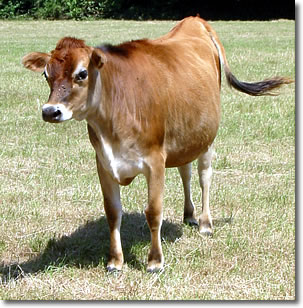
A Jersey cow...
Located at 69 Old River Road (VT Route 12 & River Road) just a short distance north of the center of Woodstock along Elm Street (map) and across the road from the Marsh-Billings-Rockefeller National Historical Park, Billings Farm is not just a working farm. It's a living museum of farm life, history and techniques.
If you've never spent time on a farm, here's where you and your family can learn all about cows, sheep, horses, oxen and chickens, how they're raised, how we benefit from them, and what they mean—and have meant—to the daily life, history and economy of Vermont.
Experience the farm and its annual cycle of work, growing, birth and death through visits to the barns, interacting with the animals, and watching the afternoon milking of the cows.
The restored 1890 Queen Anne farmhouse and its original barns hold displays explaining Vermont’s rural history and culture. For example, the Vermont Farm Year in 1890 takes you through a typical farm family's life in the year the farm house was constructed.
Daily activities make your visit even more informative and enjoyable. You may see how cheese is made, learn why corn is such an important crop, tour the heirloom garden, learn to make rope, read recipes for meals made and served on the farm (talk about fresh!).
The farm's special events schedule may help you to determine the best time to make your visit. There are quilt exhibitions, farm wagon rides, harvest festivals, crafts fairs and more.
When you visit the farm, plan also to visit neighboring Marsh-Billings-Rockefeller National Historical Park, which is also part of the farm's history.
You my also be interested in visiting Sugarbush Cheese & Maple Farm outside Woodstock, where you can taste and purchase the farm's 15 varieties of Vermont artisanal cheese and 5 of maple syrup. More...
Dana House
The Woodstock History Center's Dana House, at 26 Elm Street in the center of Woodstock, is the town's museum of history, art, crafts and daily life. The displays of antique furniture, paintings, clothing, textiles, silver, toys, farm implements, and personal effects are as interestingly made as the objects they exhibit.
Dana House, the Woodstock History Center.
Besides its historical collections, Dana House (1807), just around the corner from the Woodstock town green, organizes lectures, historical re-enactments, and programs for children.
Don't miss the perennial garden and, behind Dana House, the fine lawn with views of Woodstock's covered bridge (Middle Bridge).
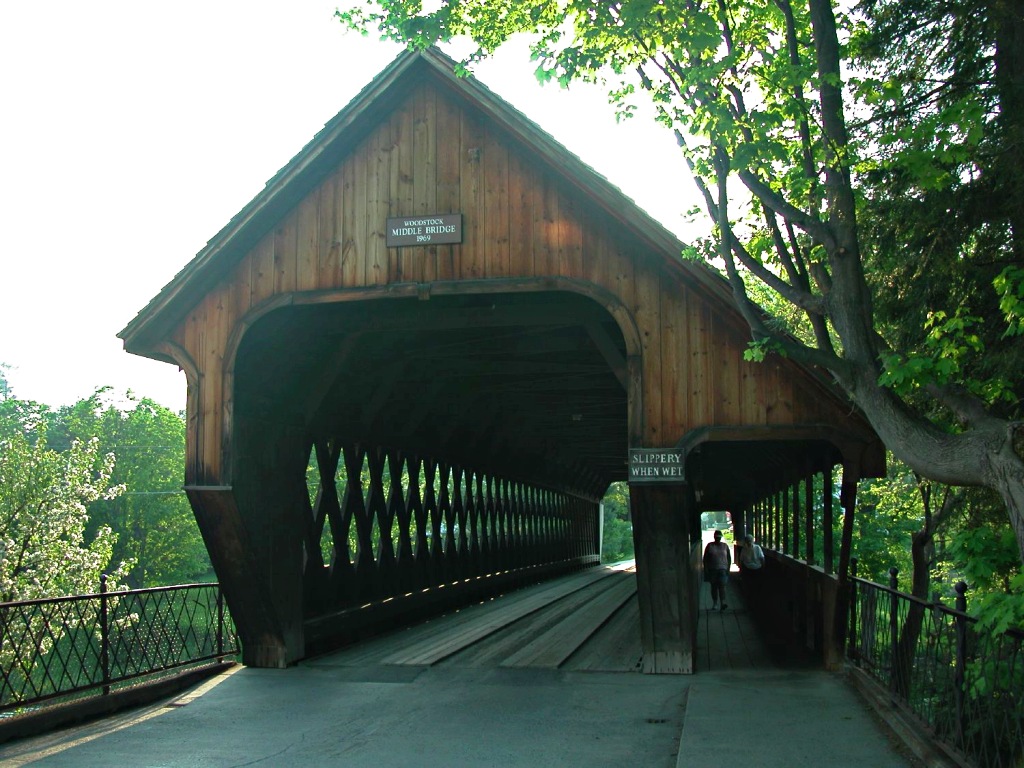
Queechee Gorge
The Ottauqueechee River carved this dramatic, straight-as-an-arrow 165-foot-deep gorge along a fault line in the bedrock.
It's easy to view right from the highway bridge, or you can take a short hike right down to the raging waters' edge. Below the highway bridge, the Ottauquechee River slips swiftly between boulders and jagged rock walls.
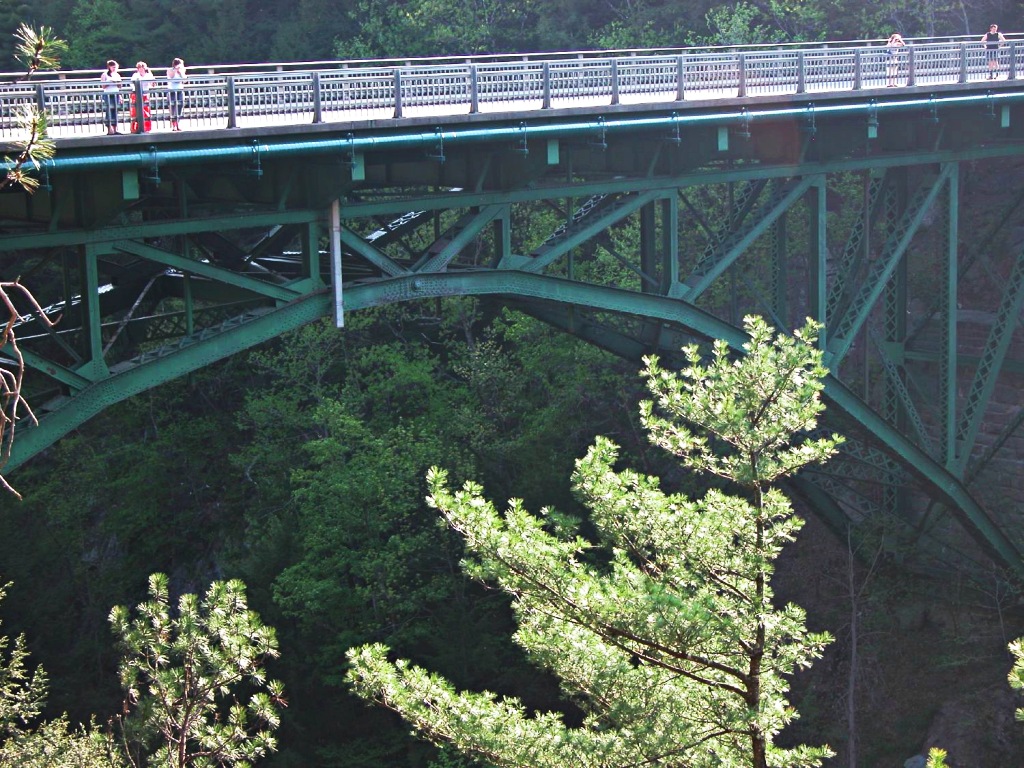
US Route 4 highway bridge over Quechee Gorge...
The Grand Canyon it's not, but an interesting feature of New England geology and pretty? Definitely.
As geological formations go, Quechee Gorge is a tiny baby, only about 13,000 years old, having been formed when the Laurentide Ice Shield retreated. The melting and drainage of the huge ice pack carved through the Devonian bedrock.
For the best view, follow the signs to the viewpoint north of the highway, or enter Quechee State Park, on the east side of the gorge, and take the short hiking trail down to the edge of the gorge. The walk will take 15 minutes, one way.
There's camping and picnicking right next to the gorge at Quechee State Park.
Sugarbush Farm
Bought by the ancestors of its current owners in 1945, Sugarbush Cheese & Maple Farm is a 550-acre (223-hectare) Vermont hillside farm at 591 Sugarbush Farm Road (map), 5 miles (8 km) northeast of Woodstock VT, that produces 15 varieties of its own Vermont artisan cheese, and four grades of its own maple syrup.
The farm also sells other Vermont-made products such as mustards, maple candies and other maple products, jams and preserves, pickles, crackers, pancake mixes, and honey.
In spring, come to see the maple sugaring operations: collecting the sap from the sugar maples, and boiling it down to syrup in the farm's own sugar house.
This modern working farm also has nature walks, farm tours and a wedding chapel.
Bridgewater Mill Mall
This restored red-brick riverside woollen mill at Bridgewater, 6.3 miles (10 km) southwest of Woodstock along US Route 4, (map) holds the workshops of Charles Shackleton, maker of handcrafted fine furniture, and potter and Miranda Thomas, maker of one-of-a-kind collectible ceramics, among many other shops including a pizzeria and hair salon, a used book store, and thrift shop.
Useful as these are, it is the artists' andartisans' workshops and galleries that draw travelers, such as the workshop of Charles Shackleton, maker of handcrafted fine furniture, and potter Miranda Thomas, maker of one-of-a-kind collectible ceramics. More...
Ski Saskadena Six
Woodstock has its own small ski area right on the outskirts, owned by the Woodstock Inn & Resort, which offers package plans of accommodation, meals and lift tickets. More...
Excursions from Woodstock
Woodstock can be your base for skiing at Killington or visits to Plymouth and other Central Vermont sights.
Where to Stay
Woodstock, Vermont has every sort of lodging, from the small, cozy New England inn to the grand resort hotel to the comfortable, convenient roadside motel.
Queen of Woodstock hostelries is the luxurious 5-star, 142-room Woodstock Inn & Resort, facing the Village Green right in the center of the town—some people say it is the center of the town. Founded by Rockefellers and designed to their taste, the grand inn caters to your comfort. More...
The 4-star, 30-room 506 On the River Inn Woodstock boasts fine views of the Ottauquechee River from its location 2 miles (4 km) west of the village center. Everything you need is here: restaurant, bar, library, game room, and many activities nearby. More...
The 3-star, 8-room Village Inn of Woodstock is on an entirely different scale, and very different ambience: a sympathetic, warm, friendly 1899 village house that's walking distance to everything in the center. More...
At the 3-star, 13-room Sleep Woodstock Motel, 4 miles (5 km) west of Woodstock, your guest room includes a small refrigerator, microwave oven and coffeemaker, as well as free Wifi. There's a restaurant right next to the motel serving breakfast, lunch and dinner. More...
Keep in mind that you may also stay at any of the many lodgings about 20 miles (32 km) to the west near Killington, or 14 miles (23 km) to the east near White River Junction and the other towns of the Upper Valley. You can find them all via this handy Hotel Map with Prices.
